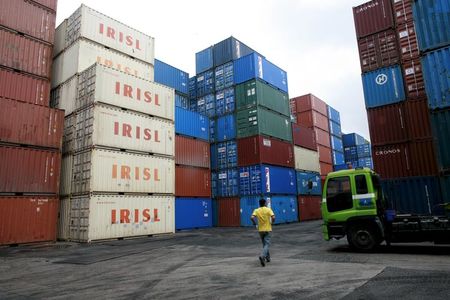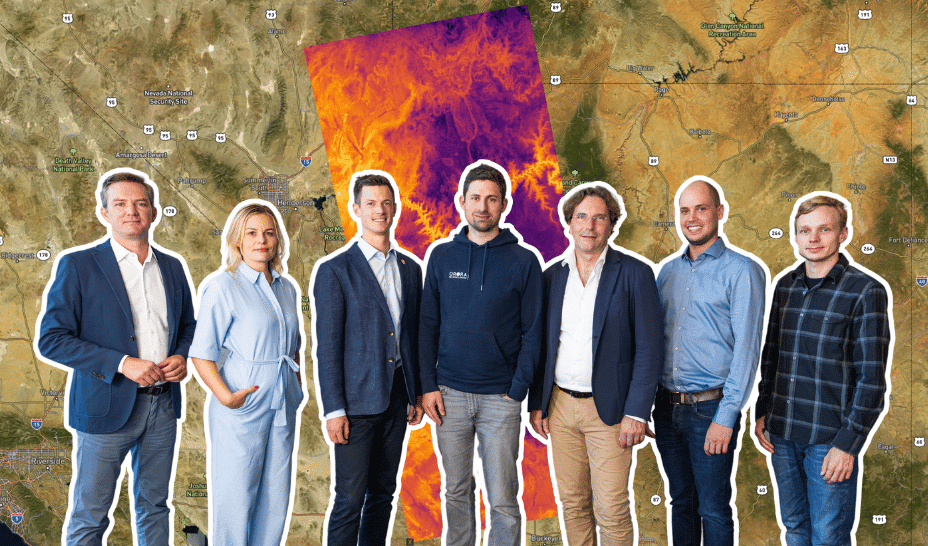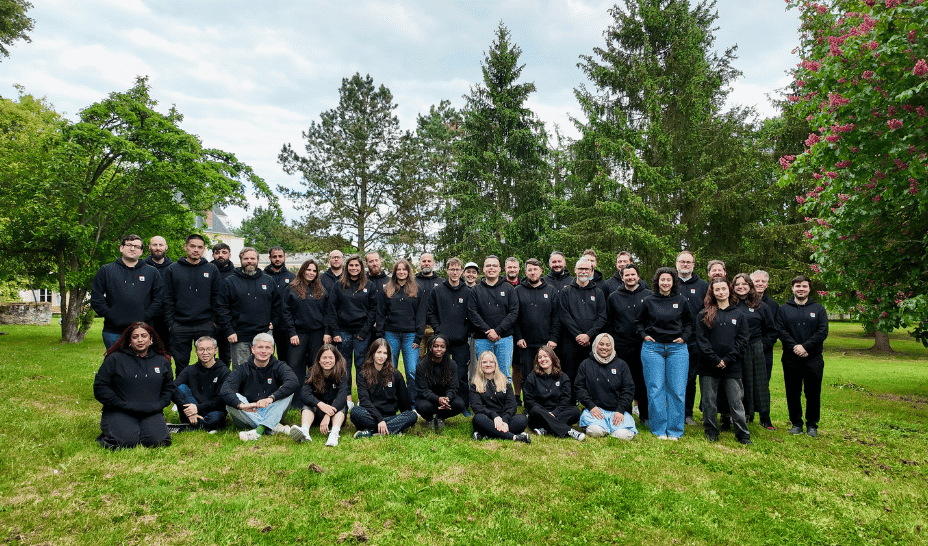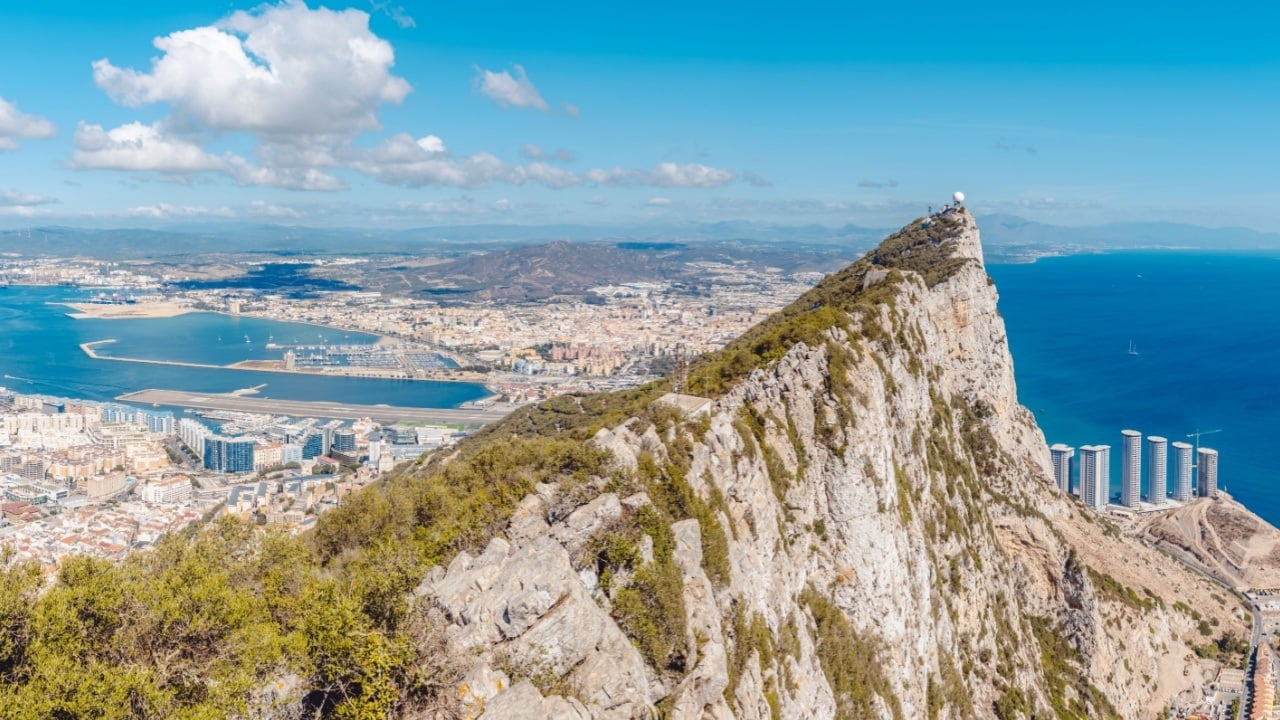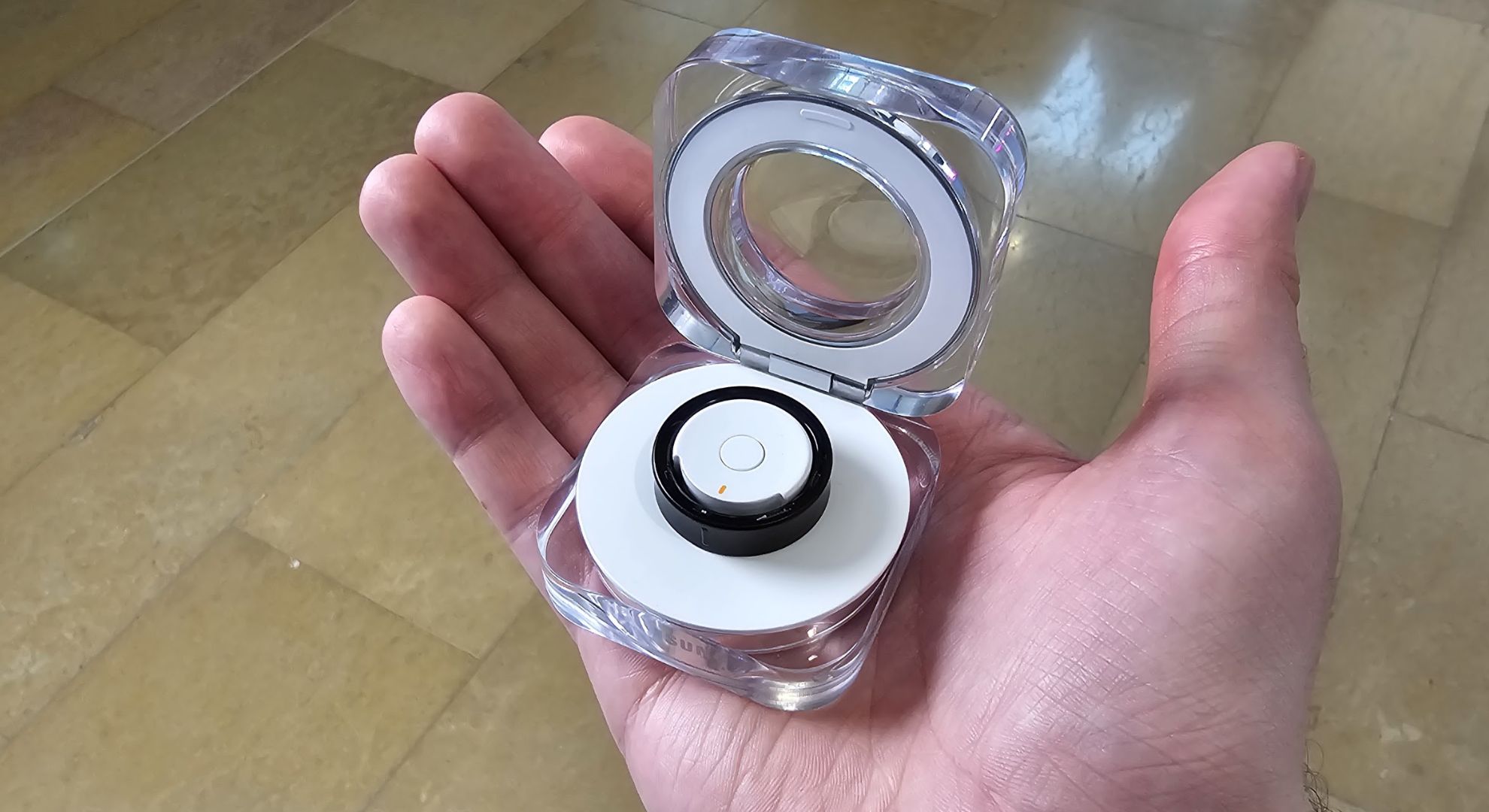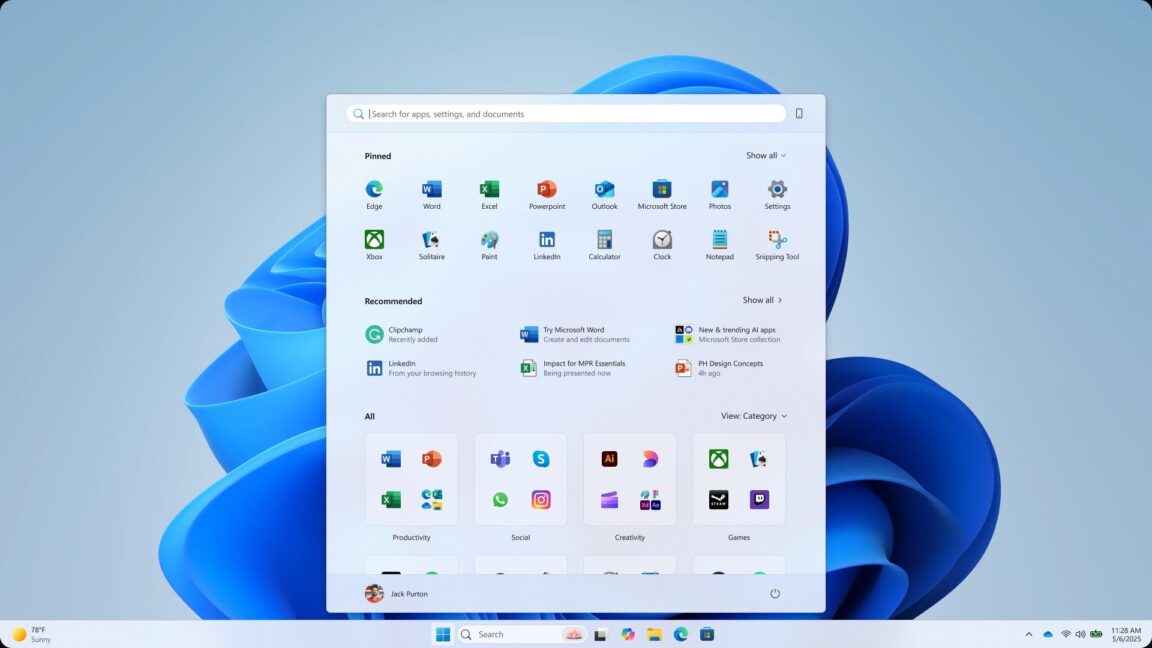Why climate researchers are taking the temperature of mountain snow
On a crisp morning in early April, Dan McEvoy and Bjoern Bingham cut clean lines down a wide run at the Heavenly Ski Resort in South Lake Tahoe, then ducked under a rope line cordoning off a patch of untouched snow. They side-stepped up a small incline, poled past a row of Jeffrey pines, then…

On a crisp morning in early April, Dan McEvoy and Bjoern Bingham cut clean lines down a wide run at the Heavenly Ski Resort in South Lake Tahoe, then ducked under a rope line cordoning off a patch of untouched snow.
They side-stepped up a small incline, poled past a row of Jeffrey pines, then dropped their packs.
The pair of climate researchers from the Desert Research Institute (DRI) in Reno, Nevada, skied down to this research plot in the middle of the resort to test out a new way to take the temperature of the Sierra Nevada snowpack. They were equipped with an experimental infrared device that can take readings as it’s lowered down a hole in the snow to the ground.
The Sierra’s frozen reservoir provides about a third of California’s water and most of what comes out of the faucets, shower heads, and sprinklers in the towns and cities of northwestern Nevada. As it melts through the spring and summer, dam operators, water agencies, and communities have to manage the flow of billions of gallons of runoff, storing up enough to get through the inevitable dry summer months without allowing reservoirs and canals to flood.
The need for better snowpack temperature data has become increasingly critical for predicting when the water will flow down the mountains, as climate change fuels hotter weather, melts snow faster, and drives rapid swings between very wet and very dry periods.
In the past, it has been arduous work to gather such snowpack observations. Now, a new generation of tools, techniques, and models promises to ease that process, improve water forecasts, and help California and other states safely manage one of their largest sources of water in the face of increasingly severe droughts and flooding.
Observers, however, fear that any such advances could be undercut by the Trump administration’s cutbacks across federal agencies, including the one that oversees federal snowpack monitoring and survey work. That could jeopardize ongoing efforts to produce the water data and forecasts on which Western communities rely.
“If we don’t have those measurements, it’s like driving your car around without a fuel gauge,” says Larry O’Neill, Oregon’s state climatologist. “We won’t know how much water is up in the mountains, and whether there’s enough to last through the summer.”
The birth of snow surveys
The snow survey program in the US was born near Lake Tahoe, the largest alpine lake in North America, around the turn of the 20th century.
Without any reliable way of knowing how much water would flow down the mountain each spring, lakefront home and business owners, fearing floods, implored dam operators to release water early in the spring. Downstream communities and farmers pushed back, however, demanding that the dam was used to hold onto as much water as possible to avoid shortages later in the year.
In 1908, James Church, a classics professor at the University of Nevada, Reno, whose passion for hiking around the mountains sparked an interest in the science of snow, invented a device that helped resolve the so-called Lake Tahoe Water Wars: the Mt. Rose snow sampler, named after the peak of a Sierra spur that juts into Nevada.

It’s a simple enough device, with sections of tube that screw together, a sharpened end, and measurement ticks along the side. Snow surveyors measure the depth of the snow by plunging the sampler down to the ground. They then weigh the filled tube on a specialized scale to calculate the water content of the snow.
Church used the device to take measurements at various points across the range, and calibrated his water forecasts by comparing his readings against the rising and falling levels of Lake Tahoe.
It worked so well that the US began a federal snow survey program in the mid-1930s, which evolved into the one carried on today by the Department of Agriculture’s Natural Resources Conservation Service (NRCS). Throughout the winter, hundreds of snow surveyors across the American West head up to established locations on snowshoes, backcountry skis, or snowmobiles to deploy their Mt. Rose samplers, which have barely changed over more than a century.
In the 1960s, the US government also began setting up a network of permanent monitoring sites across the mountains, now known as the SNOTEL network. There are more than 900 stations continuously transmitting readings from across Western states and Alaska. They’re equipped with sensors that measure air temperature, snow depth, and soil moisture, and include pressure-sensitive “snow pillows” that weigh the snow to determine the water content.
The data from the snow surveys and SNOTEL sites all flows into snow depth and snow water content reports that the NRCS publishes, along with forecasts of the amount of water that will fill the streams and reservoirs through the spring and summer.
Taking the temperature
None of these survey and monitoring programs, however, provide the temperature throughout the snowpack.
The Sierra Nevada snowpack can reach more than 6 meters (20 feet), and the temperature within it may vary widely, especially toward the top. Readings taken at increments throughout can determine what’s known as the cold content, or the amount of energy required to shift the snowpack to a uniform temperature of 32˚F.
Knowing the cold content of the snowpack helps researchers understand the conditions under which it will begin to rapidly melt, particularly as it warms up in the spring or after rain falls on top of the snow.
If the temperature of the snow, for example, is close to 32˚F even at several feet deep, a few warm days could easily set it melting. If, on the other hand, the temperature measurements show a colder profile throughout the middle, the snowpack is more stable and will hold up longer as the weather warms.

The problem is that taking the temperature of the entire snowpack has been, until now, tough and time-consuming work. When researchers do it at all, they mainly do so by digging snow pits down to the ground and then taking readings with probe thermometers along an inside wall.
There have been a variety of efforts to take continuous remote readings from sensors attached to fences, wires, or towers, which the snowpack eventually buries. But the movement and weight of the dense shifting snow tends to break the devices or snap the structures they’re assembled upon.
“They rarely last a season,” McAvoy says.
Anne Heggli, a professor of mountain hydrometeorology at DRI, happened upon the idea of using an infrared device to solve this problem during a tour of the institute’s campus in 2019, when she learned that researchers there were using an infrared meat thermometer to take contactless readings of the snow surface.
In 2021, Heggli began collaborating with RPM Systems, a gadget manufacturing company, to design an infrared device optimized for snowpack field conditions. The resulting snow temperature profiler is skinny enough to fit down a hole dug by snow surveyors and dangles on a cord marked off at 10-centimeter (4-inch) increments.

At Heavenly on that April morning, Bingham, a staff scientist at DRI, slowly fed the device down a snow sampler hole, calling out temperature readings at each marking. McEvoy scribbled them down on a worksheet fastened to his clipboard as he used a probe thermometer to take readings of his own from within a snow pit the pair had dug down to the ground.
They were comparing the measurements to assess the reliability of the infrared device in the field, but the eventual aim is to eliminate the need to dig snow pits. The hope is that state and federal surveyors could simply carry along a snow temperature profiler and drop it into the snowpack survey holes they’re creating anyway, to gather regular snowpack temperature readings from across the mountains.
In 2023, the US Bureau of Reclamation, the federal agency that operates many of the nation’s dams, funded a three-year research project to explore the use of the infrared gadgets in determining snowpack temperatures. Through it, the DRI research team has now handed devices out to 20 snow survey teams across California, Colorado, Idaho, Montana, Nevada, and Utah to test their use in the field and supplement the snowpack data they’re collecting.
The Snow Lab
The DRI research project is one piece of a wider effort to obtain snowpack temperature data across the mountains of the West.
By early May, the snow depth had dropped from an April peak of 114 inches to 24 inches (2.9 meters to 0.6 meters) at the UC Berkeley Central Sierra Snow Lab, an aging wooden structure perched in the high mountains northwest of Lake Tahoe.
Megan Mason, a research scientist at the lab, used a backcountry ski shovel to dig out a trio of instruments from what was left of the pitted snowpack behind the building. Each one featured different types of temperature sensors, arrayed along a strong polymer beam meant to hold up under the weight and movement of the Sierra snowpack.
She was pulling up the devices after running the last set of observations for the season, as part of an effort to develop a resilient system that can survive the winter and transmit hourly temperature readings.
The lab is working on the project, dubbed the California Cold Content Initiative, in collaboration with the state’s Department of Water Resources. California is the only western state that opted to maintain its own snow survey program and run its own permanent monitoring stations, all of which are managed by the water department.
The plan is to determine which instruments held up and functioned best this winter. Then, they can begin testing the most promising approaches at several additional sites next season. Eventually, the goal is to attach the devices at more than 100 of California’s snow monitoring stations, says Andrew Schwartz, the director of the lab.
The NRCS is conducting a similar research effort at select SNOTEL sites equipped with a beaded temperature cable. One such cable is visible at the Heavenly SNOTEL station, next to where McEvoy and Bingham dug their snow pit, strung vertically between an arm extended from the main tower and the snow-covered ground.

Schwartz said that the different research groups are communicating and collaborating openly on the projects, all of which promise to provide complementary information, expanding the database of snowpack temperature readings across the West.
For decades, agencies and researchers generally produced water forecasts using relatively simple regression models that translated the amount of water in the snowpack into the amount of water that will flow down the mountain, based largely on the historic relationships between those variables.
But these models are becoming less reliable as climate change alters temperatures, snow levels, melt rates, and evaporation, and otherwise drives alpine weather patterns outside of historic patterns.
“As we have years that scatter further and more frequently from the norm, our models aren’t prepared,” Heggli says.
Plugging direct temperature observations into more sophisticated models that have emerged in recent years, Schwartz says, promises to significantly improve the accuracy of water forecasts. That, in turn, should help communities manage through droughts and prevent dams from overtopping even as climate change fuels alternately wetter, drier, warmer, and weirder weather.
About a quarter of the world’s population relies on water stored in mountain snow and glaciers, and climate change is disrupting the hydrological cycles that sustain these natural frozen reservoirs in many parts of the world. So any advances in observations and modeling could deliver broader global benefits.
Ominous weather
There’s an obvious threat to this progress, though.
Even if these projects work as well as hoped, it’s not clear how widely these tools and techniques will be deployed at a time when the White House is gutting staff across federal agencies, terminating thousands of scientific grants, and striving to eliminate tens of billions of dollars in funding at research departments.
The Trump administration has fired or put on administrative leave nearly 6,000 employees across the USDA, or 6% of the department’s workforce. Those cutbacks have reached regional NRCS offices, according to reporting by local and trade outlets.
That includes more than half of the roles at the Portland office, according to O’Neill, the state climatologist. Those reductions prompted a bipartisan group of legislators to call on the Secretary of Agriculture to restore the positions, warning the losses could impair water data and analyses that are crucial for the state’s “agriculture, wildland fire, hydropower, timber, and tourism sectors,” as the Statesman Journal reported.
There are more than 80 active SNOTEL stations in Oregon.
The fear is there won’t be enough people left to reach all the sites this summer to replace batteries, solar panels, and drifting or broken sensors, which could quickly undermine the reliability of the data or cut off the flow of information.
“Staff and budget reductions at NRCS will make it impossible to maintain SNOTEL instruments and conduct routine manual observations, leading to inoperability of the network within a year,” the lawmakers warned.
The USDA and NRCS didn’t respond to inquiries from MIT Technology Review.

If the federal cutbacks deplete the data coming back from SNOTEL stations or federal snow survey work, the DRI infrared method could at least “still offer a simplistic way of measuring the snowpack temperatures” in places where state and regional agencies continue to carry out surveys, McAvoy says.
But most researchers stress the field needs more surveys, stations, sensors, and readings to understand how the climate and water cycles are changing from month to month and season to season. Heggli stresses that there should be broad bipartisan support for programs that collect snowpack data and provide the water forecasts that farmers and communities rely on.
“This is how we account for one of, if not the, most valuable resource we have,” she says. “In the West, we go into a seasonal drought every summer; our snowpack is what trickles down and gets us through that drought. We need to know how much we have.”



![How to Calculate Market Share [Formula + Guide]](https://static.semrush.com/blog/uploads/media/73/24/7324b52285631748eef82763664acf82/calculate-market-share-sm.png)























